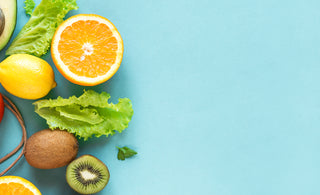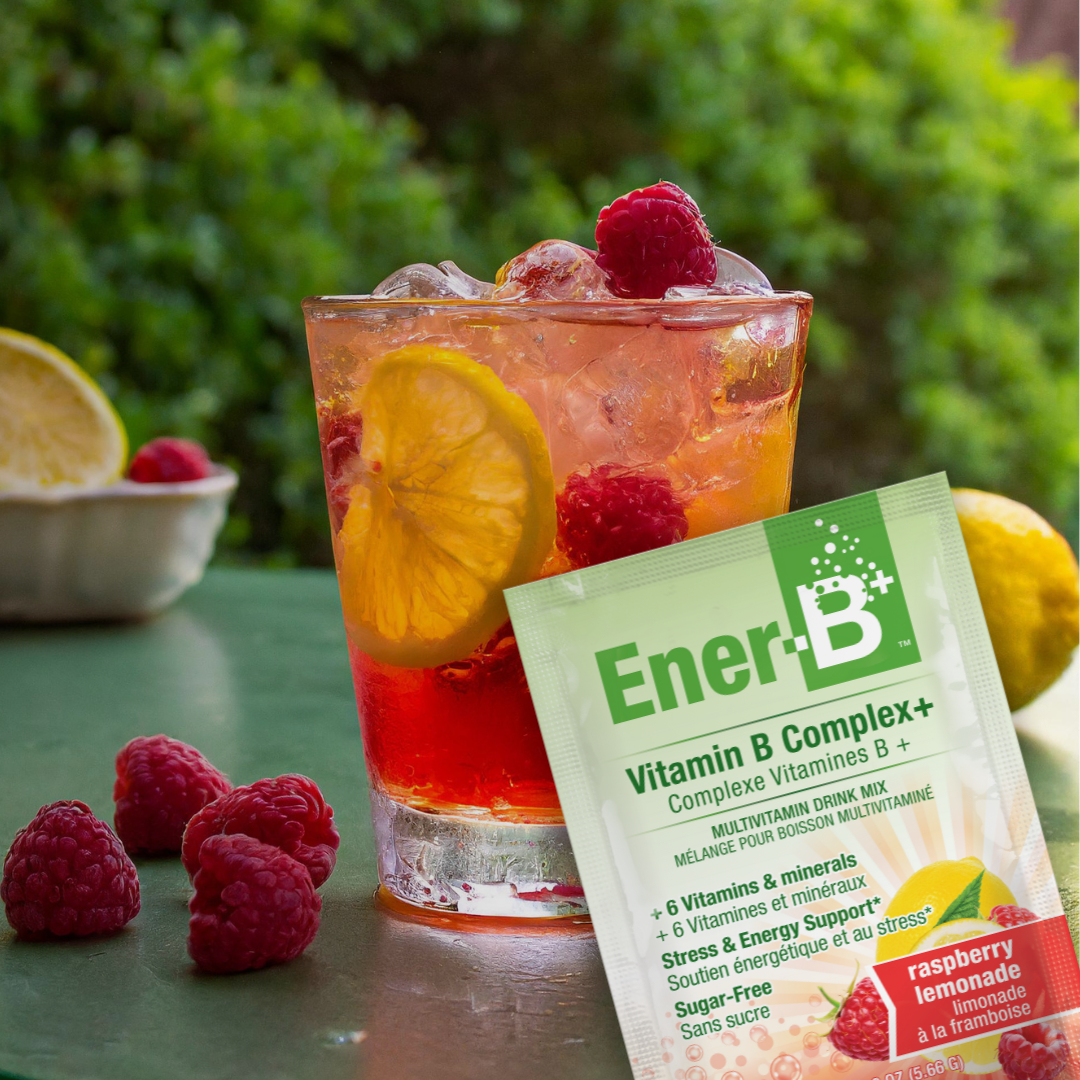
With the sun starting to come out and the days getting a little longer, naturally we are pulling out our beach hats, volleyballs and dusting off our bikes. Summer is on the horizon! Yahoo! With summer, typically comes the accompanying desire to eat a little healthier so you can rock your shorts and bikini with confidence. It comes as no secret, that eating healthy year-round should be your ultimate goal instead of trying to get into shape before beach season. With that being said, in today’s blog post, Holistic Nutritionist Lindsay Mustard shares six healthy eating tips that you can implement year-round!

Tip #1: Good carbs > No carbs
The dreaded carb conversation. We crave nothing but potatoes, rice and grains during the winter months and then eat salads like they are going out of style during the summer. What gives? Naturally, our bodies hold onto more body fat during the winter to keep it warm. We are often eating soups, stews and chilis filled with starchy carbs to keep us warm and cozy. When summer rolls around, most people experience a shift in their appetite and naturally eat less due to the hot weather. When we do eat, it is typically lighter, more watery foods such as watermelon, fresh fruits, salads and so on. Because we are spending more time outside, we crave the foods that contain more water to keep us hydrated throughout our busy day. Carbohydrates have been labelled as “bad” and “good” over the last few years. Some people take it to the extreme and cut them all together by following the keto diet, and then there are others who eat a predominantly plant-based diet containing mostly starchy carbs. Our body’s preferred source of energy is carbohydrates, glucose to be exact. We need the sugars to serve our muscles and brain so that we can overhand serve the volleyball on the beach or run after our kids in the water. Carbohydrates do nothing more than serve an energy function when they are consumed. Where they get us into trouble is when they start to take the shape of ice cream, cookies, pizza, fries and grilled cheese sandwiches on the regular. When you’re constructing your plate, choose the foods that contain the most amount of water first: you guessed it, the vegetables and fruits! This ensures that 1) you are hydrating yourself while you eat, 2) you are eating your micronutrients (your vitamins and minerals) and 3) you will eat less overall because of the amount of volume these healthy carbohydrates contain. This rule applies year-round, instead of foregoing carbs all together in an attempt to shape up for the season, choose the best carbohydrates and put a smaller serving of the “fun carbs” on your plate. We guarantee you that by the time you finish your healthy carbs, protein and fats on your plate, that you’ll be too full to eat the rest!
Tip #2: Fill your plate with vegetables first
This tip ties directly into the first one. Imagine you are at a buffet, the world is your oyster, or in this case, your food coma. Maybe! When you’re building your plate, you have an endless amount of foods to choose from. Start with vegetables. Fill half of your plate with a variety of colored vegetables such as broccoli, cauliflower, peppers, carrots and onions. Once it's half full, head over to the protein section and choose a palm size serving. Next up, healthy fats. This could be a drizzle of olive oil, a handful of nuts/seeds, a scoop of guacamole - you’re the judge! After all that, then head over for the fun stuff - the stuff that you really want to eat, but know deep down that you will be keeled over with stomach cramps if you eat your bodyweight worth of it. That stuff. This ensures that you eat from the vegetables, to the protein, to the fat, in the order that it will be digested. You’ll be so full from the abundance of healthy food you just consumed that you won’t be able to eat the rest! The other perk about using this tip, is there is no deprivation. You can eat anything you put on your plate, but only after you eat the good stuff first. Gone are the days of FOMO (Fear of Missing Out), say hello to the “I Can Eat Anything” mentality!
Tip #3: Eat with your eyes - count colours over calories
Who doesn’t love a good rainbow? Well, now you have the opportunity and goal, to create a rainbow on your plate every time you eat! Numerous studies have shown that we eat with our eyes, we are visual creatures - and that’s a good thing! The only time I get excited about brown food is at Christmas dinner when the gravy is being passed around, other than that, I shoot to make my meals as colourful as possible. When our meal is visually pleasing, we take pride in the time it took to make and eat slower. We are more mindful with our eating intentions and often eat less because we are savouring every bite. Shoot for having 3-5 colours on your plate at every meal. This could be a rainbow coleslaw with purple cabbage, carrots, red onions and broccoli served with an orange thai dressing. Boom. That’s 5 colours right there! If you have kids, make it a game or challenge - how many colours can you fit on your plate!
Tip #4: Drink water throughout the day but avoid it before/after meals
Have you ever thought about how odd it is that we are given water before, during and after our meals? Water waters down our digestive enzymes. Yes, it helps to take up space in your stomach if you drink it beforehand, but how do you feel afterwards? Like a pinata waiting to burst? Me too. Drink plenty of water throughout the day - we’re talking liters! Drink water first thing in the morning, between meals, during your workouts and before you go to bed. Our body is built on water, so give it what it craves the most! When it comes to meal timing, try to stop drinking water 15-30 minutes before you eat. It's common for individuals to use liquids as an aid to wash down their food because they aren’t chewing it enough. Instead of using water to lubricate your food, let your saliva do the work. Chew your food more! This tip will not only help you eat less overall, but it will also help you get the most nutrients out of your food by helping your body break them down into smaller pieces. This tip is a triple whammy, hydrates during non-meal times and then chew like a boss when it is. *insert first pump here*
Tip #5: Eat food, mostly plants.
Four short words, but strung together hold a powerful lesson. Our bodies love clean carbohydrates for two reasons, 1) because they are loaded with water and 2) because they breakdown into glucose, our most readily available source of energy. It goes without saying that we should strive to eat plenty of fruits and vegetables throughout the day to meet our bodies needs. Going back to the first two tips, our plates should be primarily fruits and vegetables with meat and dairy products being a small sliver of it. Get creative in the kitchen - how can you add more fruits and vegetables to your meals? Can you replace basmati rice with broccoli rice? Can you spiralize zucchini in replacement of wholewheat pasta? Think outside of the box, literally, release your grip on the box of risotto, and see what healthy changes you can make to meals that you already love eating!
Tip #6: Skip the sugar and salt, you’re sweet enough already!
We mean it! If you were to pick up a bottle of salad dressing off of the shelf at the grocery store, you’d be shocked to see the number of calories and grams of sugar and salt it packs. It's a shocking amount. If you take any tip from this blog post, let it be this - make your food from scratch as often as possible. Most of the foods we are consuming nowadays are frankenfoods - foods that are made in a lab that hardly resemble their original form. Sugar and salt are two staple ingredients that companies use to light up receptors in our brains that lead to us craving more of them. This starts the cycle of craving it, overeating and then feeling like a blowfish because we ate so much salt. The cycle repeats itself as we begin to crave it again at a later date. Skip the feeling all together and keep it simple in the kitchen. Simple oil and vinaigrette dressings, dips and sauces made from avocados, healthy mayo and yogurt. And if you need to buy it, make sure you can pronounce the ingredients. When it comes to salt in general, not all salt is bad! Our bodies actually require the mineral, but it prefers sea salt! Use pink himalayan salt when cooking and sprinkle a little bit on your meals to maximum flavour. Salt helps our bodies to retain some water to ensure that we stay hydrated and that our electrolyte levels remain in check.
Regardless of the season, drinking Ener-C and Ener-C Sport will help to keep your immune system strong, your body hydrated and your electrolytes balanced. In other words, its a recipe for the best summer yet combined with the tips above!
Lindsay Mustard is a Holistic Nutritionist, firefighter-in-training and recipe-wizard with a burning passion for health and fitness. In her nutrition practice, Lindsay works with clients to craft a unique plan that is tailored to their specific health goals using a natural, whole food and supplement approach.

